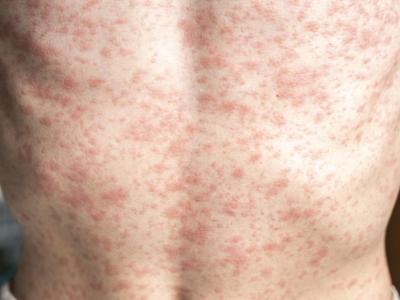H5N1 hits more farms in Ivory Coast, Nigeria
Highly pathogenic H5N1 avian influenza stuck two more commercial farms in Ivory Coast and Nigeria, according to separate reports from the World Organization for Animal Health (OIE).
Ivory Coast's outbreak was detected at a farm housing broilers and layers in Aboisso state, on the country's southeastern coast. The outbreak began on Jul 17, and the virus killed 20,286 of 27,652 susceptible birds. The survivors were culled to control the spread of the virus. Health officials pinned the source of the outbreak on the introduction of new live animals.
Nigeria's latest outbreak began Aug 10, hitting layers and broilers at a farm in Gombe state, located in the east central part of the country. The report noted that ducks and pigeons were also kept at the farm. Of 1,000 at-risk birds, the virus killed 350. It's not clear if the site was depopulated, but other control steps included disinfection, quarantine, and control of poultry movements. So far the source of the virus hasn't been determined.
A handful of African countries have seen H5N1 resurgence in poultry after a several-year hiatus. Global health officials have called for increased resources and efforts to battle the outbreaks, one of several recent worldwide avian influenza patterns that pose threats to food supplies and human health.
Aug 25 OIE report on Ivory Coast outbreak
Aug 26 OIE report on Nigerian outbreak
H7N9 studies shed light on Chinese poultry patterns, gender differences
Two recent studies revealed more about H7N9 avian influenza patterns in China, one showing a link between virus contamination in poultry markets and human illnesses and one suggesting that women of childbearing age may be more vulnerable to the virus.
The poultry sampling study took place in Zhejiang province, one of the hardest hit during China's H7N9 outbreaks. The team from China published their findings yesterday in Public Library of Science (PLoS) One.
Between January 2013 and March 2014 researchers obtained and tested 6,740 samples from 751 poultry environment sites from 11 of the province's cities. They explored the relationship between positive samples and human illnesses, as well as seasonal and geographic patterns. The testing period covers the first two waves of H7N9 activity in China.
About 10% of the environmental samples were positive for H7N9, with peaks seen in the spring and winter. Prevalence decreased from north to southeast, similar to the distribution of human cases. Of the different poultry environments, live markets had the highest prevalence, with chopping board swabs showing the highest virus prevalence among the different sample types analyzed.
The prevalence of virus in the environment correlated with incidence of human cases (r2 = 0.498; P < 0.01); cities with higher H7N9 incidences had more H7N9 among samples and sampling sites.
Poultry market closures in late January 2014 led to decreased H7N9 environmental positives, declining from about 19% to nearly 7%, in line with a drop in human infections.
Aug 26 PLoS One abstract
In another recent study, a German and Chinese research team that analyzed human H7N9 cases found that women in their childbearing years seemed more likely to die from their illnesses; the authors' tests on mice with different flu strains also found that females were more severely affected, especially those infected with H7N9. They reported their findings in an Aug 25 early online edition of Vaccine.
The researchers' analysis of human cases included 535 lab-confirmed cases, of which 197 were fatal, compiled by the Chinese Center for Disease Control and Prevention as of Jan 25, 2015. Though more men were infected in the outbreak, females in their reproductive years were more likely to die from their illness (female-to-male ratio = 1.2), a pattern found in earlier studies.
The group's mouse studies found increased cytokine and chemokine response in female mice, which corresponded to disease severity. The researchers also found reduced thrombocyte and neutrophil responses in female mice.
In conclusion, they said more animal studies are needed to determine the factors that lead to more severe flu infections in females and that the study findings could help guide vaccine priorities when supplies are scarce.
Aug 25 Vaccine abstract
Oceania, Cuba, China still seeing flu activity, quiet elsewhere
Influenza activity through Aug 9 reported Aug 24 by the World Health Organization (WHO) shows cases in Australia and New Zealand still increasing in number, cases in temperate South America peaking, and cases in South Africa decreasing.
The strains predominating in Oceania are H3N2 and influenza B.
Cuba reported high levels of influenza-like illness and severe respiratory infections associated with the 2009 H1N1 strain and respiratory syncytial virus detections. Southern China still has a high but decreasing level of predominately H3N2 flu.
Northern Hemisphere countries are seeing low levels of activity, with some countries ceasing or reducing surveillance until the start of the next flu season. Other areas with decreasing or low activity include those in both Eastern and Western Africa, tropical Asia, and most of tropical Central America and the Caribbean.
Aug 24 WHO update










